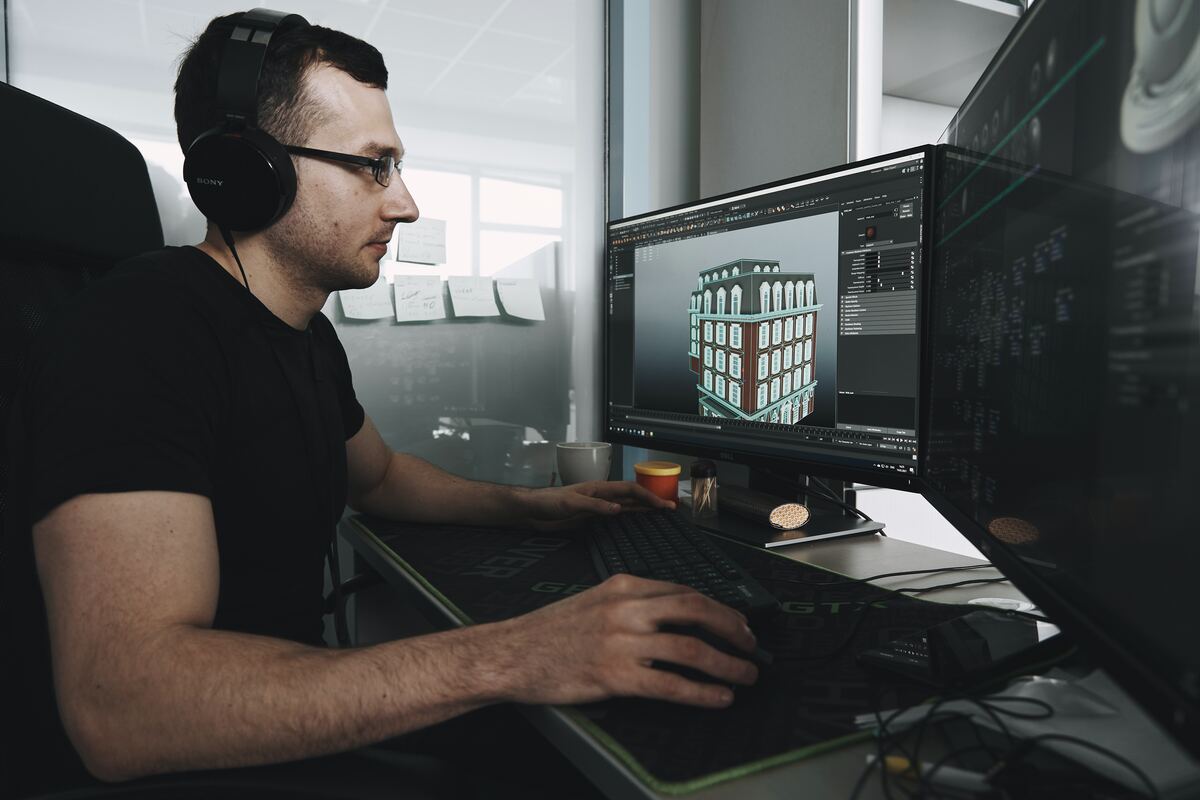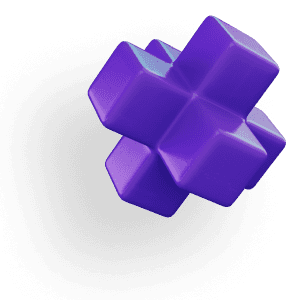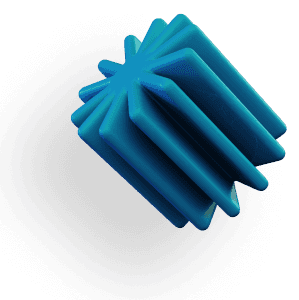Instant Connection for Pixel Streaming
— New Feature Automated Setup





The Best 3D Modeling Software
The Best 3D Modeling Software
The Best 3D Modeling Software
Published on August 3, 2023
Updated on February 6, 2023
Table of Contents
One of the most fascinating aspects of computer-aided design, 3D modeling allows engineers, architects, and artists to create three-dimensional curves, surfaces, and solid models. Using the right 3D modeling software can help you create higher-quality 3D designs.
When it comes to 3D design software, some essential technical requirements to note are your computer’s available RAM, free disk space, as well as graphics card (GPU)—all of which help you achieve a more seamless design and rendering experience.
With that in mind, check out some of the best 3D modeling software of 2023 below. If a simple search for 3D modeling software online makes you feel overwhelmed, we’re here to help with the best suggestions from industry professionals!

Photo by Javier Miranda on Unsplash
1. Autodesk Maya
The industry standard for creating video game visuals, animated films, and visual effects, Autodesk Maya is an advanced tool that caters to professionals who are experienced in CAD. With Autodesk Maya 3D modeling is a breeze, thanks to virtually unlimited features and impressive live rendering.
Autodesk Maya is a powerful 3D software designed for professional use and has a steeper learning curve than free beginner software like Blender. Click here to learn more about Blender vs Autodesk Maya.
Compatibility: Windows, macOS, and Linux
System Requirements: Multi-core processor CPU, 8GB of RAM, and 7 GB of available disk space for installation.
Pros: One of the best animation tools available, crowded and engaged community.
Cons: Autodesk Maya is expensive and hard to learn for beginners.
Price: Autodesk Maya offers a 30-day free trial and if you decide to continue using it, it costs $1,875/year or $235/month.
2. Autodesk 3ds Max
A precursor to Maya, Autodesk’s 3ds Max is widely used for 3D modeling, simulation, and rendering in movies, games, and motion graphics as well as industrial design. While Maya is better geared toward animation, 3ds Max excels in modeling, texturing, and meshing.
Compatibility: Windows-only
System Requirements: Multi-core processor CPU, 4GB of RAM, and 9GB of available disk space.
Pros: More user-friendly than Autodesk Maya, and Autodesk 3ds Max is free for students.
Cons: Only available for Windows users.
Price: Autodesk 3ds Max offers a 30-day free trial and if you decide to continue using it, it costs $1,875/year or $235/month.
3. Blender
Blender 3D modeling software is the largest open-source tool that allows for modeling, rigging, animation, simulation, rendering, and motion tracking along with video editing. It is widely used by freelance artists, architects, scientists, and VFX professionals to create 3D models. Blender is also one of the best 3D modeling software for 3D printing.
Compatibility: Windows, macOS, and Linux
System Requirements: 64-bit quad-core CPU with SSE2 support, 8GB of RAM, and at least 1GB GPU.
Pros: Free, fast rendering experience with CUDA GPU acceleration and VFX projects and has a great community.
Cons: Not as easy for beginners to learn as Sketchup.
Price: Free.

Photo by Tom Claes on Unsplash
4. KeyShot
Keyshot is an excellent 3D software for creating photo-realistic 3D models for jewelry designs, architecture, and more. The 3D design software is perfect for creating models for 3D printing as well. It offers seamless syncing with other 3D design software and supports 30+ file formats.
KeyShot is often compared to Blender because of its similar applications. KeyShot offers more advanced lighting options and faster rendering than Blender, but many of the other features are the same. Click here to learn more about how Blender compares to KeyShot.
Compatibility: Windows and macOS
System Requirements: 4 GB of RAM, quad-core CPU, OpenGL 2.0 capable system, Intel or AMD 64-bit processor with SSE4.1 or higher
Pros: Easy-to-use interface, fast rendering, VR export, and one of the easiest 3D modeling software for creating photo-realistic designs.
Cons: Large file sizes, expensive, and requires a fast CPU. 👉🏽 You can use KeyShot without system limitations by starting your high-performance computer on vagon.
Price: $995 to $3,995.
5. Cinema 4D
Cinema 4D is one of the most popular 3D modeling, animation, and rendering software among amateurs and professionals alike. With Cinema 4D you can easily create stunning designs, motion graphics, VFX, VR, video games, and more. It has an easy-to-use interface that makes it a good choice for beginner 3D artists. It has a larger selection of advanced tools than comparable software such as Blender.
Compatibility: Windows, macOS, and Linux
System Requirements: 8 GB RAM (Windows) or 4 GB RAM (macOS), Intel 64-bit CPU or AMD 64-bit CPU with SSE3 support
Pros: Easy to learn, almost endless selection of tools, user-friendly interface, and efficient performance.
Cons: Rendering issues and expensive.
Price: $59.91 per month or $719 annually.
6. AutoCAD Civil 3D
Autodesk’s flagship product, AutoCAD has been around for decades and used by a great number of architects, engineers, as well as construction experts to create 2D and 3D works.
Designed specifically for civil engineers and environmental and industrial designers, AutoCAD Civil 3D can be used to organize project data and create and analyze surfaces, road corridors, and networks.
Compatibility: Windows-only.
System Requirements: 2.5–2.9 GHz processor,16GB of RAM, 16GB of free disk space, and 1GB or more GPU.
Pros: Used by engineers, architects, and people who work in the construction industry
Cons: Only available for Windows users.
Price: AutoCAD Civil 3D offers a 30-day free trial and if you decide to continue using it, it costs $2,680/year or $335/month.
7. Autodesk Revit
The best 3D modeling software for architecture, Revit makes it possible to achieve high-quality and coordinated designs. It is a multidisciplinary Building Information Modeling (BIM) software highlighting accuracy and precision as its top priorities in 3D modeling for mechanical, structural, and architectural drawings.
Compatibility: Windows-only.
System Requirements: Multi-core processor, high CPU speed, 8GB of RAM, and 30GB of free disk space.
Pros: Features tools for architects, engineers, and construction professionals
Cons: Only available for Windows users.
Price: Autodesk Revit offers a 30-day free trial and if you decide to continue using it, it costs $2,805/year or $350/month.

Photo by Maxim Tolchinskiy on Unsplash
8. SketchUp
A free 3D modeling software for beginners, SketchUp only requires an internet connection for users to access the tools they need, as it offers cloud storage and sharing features. In addition to architectural and interior designs, SketchUp can also be used for mechanical and civil engineering, movie and video designs, and landscape structures.
Compatibility: Windows and macOS.
System Requirements: 2+ GHz processor, 4GB RAM, and 1GB GPU.
Pros: One of the best 3D modeling software for beginners.
Cons: Limited designs and customization options.
Price: Starting from $119/year for professional use.
9. ZBrush
ZBrush is an advanced 3D modeling software that enables creatives to sculpt 3D models out of “digital clay” instead of the typical modeling techniques like mesh or parametric. It is owned by the same company that created Cinema 4D. This is one of the most popular 3D software for creating NFTs in 2023.
There is a free version of ZBrush that beginners can take advantage of to learn the software before investing in the full version. The advanced features offered by this digital sculpting software can seem complicated at first, but once you get the hang of it the imagination is the limit for what you can create.
Compatibility: Windows and macOS.
System Requirements: 4 GB RAM, 20 GB of free hard drive space, and 64-bit editions of Windows 10 or 11.
Pros: Optimized for digital sculpting, integration with other 3D software, and great for character designs.
Cons: Steep learning curve.
Price: $149/month or $1,199/year.
10. Modo
Modo is one of the most accessible 3D software for modeling and animation. It has fewer professional applications, but its accessibility and features make it worth mentioning in our list of the best modeling 3D software in 2023. Modo has a more streamlined layout and modeling tools than Blender, which has gained the platform a growing fan base in the industry.
Compatibility: Windows, macOS, and Linux.
System Requirements: 10 GB disk space, 2 GB RAM, and Intel processor(s), Core i3 or higher.
Pros: Customizable tools and interface, efficient workflow, and fast rendering.
Cons: Complicated texturing process and no tools for creating fluids or liquids.
Price: $71/month or $485/year.
Worried that your hardware isn’t powerful enough to run advanced 3D modeling software? Look no further than vagon, which enables you to work efficiently with all design-related software. Try your cloud-based, high-performance personal computer on Vagon today.
One of the most fascinating aspects of computer-aided design, 3D modeling allows engineers, architects, and artists to create three-dimensional curves, surfaces, and solid models. Using the right 3D modeling software can help you create higher-quality 3D designs.
When it comes to 3D design software, some essential technical requirements to note are your computer’s available RAM, free disk space, as well as graphics card (GPU)—all of which help you achieve a more seamless design and rendering experience.
With that in mind, check out some of the best 3D modeling software of 2023 below. If a simple search for 3D modeling software online makes you feel overwhelmed, we’re here to help with the best suggestions from industry professionals!

Photo by Javier Miranda on Unsplash
1. Autodesk Maya
The industry standard for creating video game visuals, animated films, and visual effects, Autodesk Maya is an advanced tool that caters to professionals who are experienced in CAD. With Autodesk Maya 3D modeling is a breeze, thanks to virtually unlimited features and impressive live rendering.
Autodesk Maya is a powerful 3D software designed for professional use and has a steeper learning curve than free beginner software like Blender. Click here to learn more about Blender vs Autodesk Maya.
Compatibility: Windows, macOS, and Linux
System Requirements: Multi-core processor CPU, 8GB of RAM, and 7 GB of available disk space for installation.
Pros: One of the best animation tools available, crowded and engaged community.
Cons: Autodesk Maya is expensive and hard to learn for beginners.
Price: Autodesk Maya offers a 30-day free trial and if you decide to continue using it, it costs $1,875/year or $235/month.
2. Autodesk 3ds Max
A precursor to Maya, Autodesk’s 3ds Max is widely used for 3D modeling, simulation, and rendering in movies, games, and motion graphics as well as industrial design. While Maya is better geared toward animation, 3ds Max excels in modeling, texturing, and meshing.
Compatibility: Windows-only
System Requirements: Multi-core processor CPU, 4GB of RAM, and 9GB of available disk space.
Pros: More user-friendly than Autodesk Maya, and Autodesk 3ds Max is free for students.
Cons: Only available for Windows users.
Price: Autodesk 3ds Max offers a 30-day free trial and if you decide to continue using it, it costs $1,875/year or $235/month.
3. Blender
Blender 3D modeling software is the largest open-source tool that allows for modeling, rigging, animation, simulation, rendering, and motion tracking along with video editing. It is widely used by freelance artists, architects, scientists, and VFX professionals to create 3D models. Blender is also one of the best 3D modeling software for 3D printing.
Compatibility: Windows, macOS, and Linux
System Requirements: 64-bit quad-core CPU with SSE2 support, 8GB of RAM, and at least 1GB GPU.
Pros: Free, fast rendering experience with CUDA GPU acceleration and VFX projects and has a great community.
Cons: Not as easy for beginners to learn as Sketchup.
Price: Free.

Photo by Tom Claes on Unsplash
4. KeyShot
Keyshot is an excellent 3D software for creating photo-realistic 3D models for jewelry designs, architecture, and more. The 3D design software is perfect for creating models for 3D printing as well. It offers seamless syncing with other 3D design software and supports 30+ file formats.
KeyShot is often compared to Blender because of its similar applications. KeyShot offers more advanced lighting options and faster rendering than Blender, but many of the other features are the same. Click here to learn more about how Blender compares to KeyShot.
Compatibility: Windows and macOS
System Requirements: 4 GB of RAM, quad-core CPU, OpenGL 2.0 capable system, Intel or AMD 64-bit processor with SSE4.1 or higher
Pros: Easy-to-use interface, fast rendering, VR export, and one of the easiest 3D modeling software for creating photo-realistic designs.
Cons: Large file sizes, expensive, and requires a fast CPU. 👉🏽 You can use KeyShot without system limitations by starting your high-performance computer on vagon.
Price: $995 to $3,995.
5. Cinema 4D
Cinema 4D is one of the most popular 3D modeling, animation, and rendering software among amateurs and professionals alike. With Cinema 4D you can easily create stunning designs, motion graphics, VFX, VR, video games, and more. It has an easy-to-use interface that makes it a good choice for beginner 3D artists. It has a larger selection of advanced tools than comparable software such as Blender.
Compatibility: Windows, macOS, and Linux
System Requirements: 8 GB RAM (Windows) or 4 GB RAM (macOS), Intel 64-bit CPU or AMD 64-bit CPU with SSE3 support
Pros: Easy to learn, almost endless selection of tools, user-friendly interface, and efficient performance.
Cons: Rendering issues and expensive.
Price: $59.91 per month or $719 annually.
6. AutoCAD Civil 3D
Autodesk’s flagship product, AutoCAD has been around for decades and used by a great number of architects, engineers, as well as construction experts to create 2D and 3D works.
Designed specifically for civil engineers and environmental and industrial designers, AutoCAD Civil 3D can be used to organize project data and create and analyze surfaces, road corridors, and networks.
Compatibility: Windows-only.
System Requirements: 2.5–2.9 GHz processor,16GB of RAM, 16GB of free disk space, and 1GB or more GPU.
Pros: Used by engineers, architects, and people who work in the construction industry
Cons: Only available for Windows users.
Price: AutoCAD Civil 3D offers a 30-day free trial and if you decide to continue using it, it costs $2,680/year or $335/month.
7. Autodesk Revit
The best 3D modeling software for architecture, Revit makes it possible to achieve high-quality and coordinated designs. It is a multidisciplinary Building Information Modeling (BIM) software highlighting accuracy and precision as its top priorities in 3D modeling for mechanical, structural, and architectural drawings.
Compatibility: Windows-only.
System Requirements: Multi-core processor, high CPU speed, 8GB of RAM, and 30GB of free disk space.
Pros: Features tools for architects, engineers, and construction professionals
Cons: Only available for Windows users.
Price: Autodesk Revit offers a 30-day free trial and if you decide to continue using it, it costs $2,805/year or $350/month.

Photo by Maxim Tolchinskiy on Unsplash
8. SketchUp
A free 3D modeling software for beginners, SketchUp only requires an internet connection for users to access the tools they need, as it offers cloud storage and sharing features. In addition to architectural and interior designs, SketchUp can also be used for mechanical and civil engineering, movie and video designs, and landscape structures.
Compatibility: Windows and macOS.
System Requirements: 2+ GHz processor, 4GB RAM, and 1GB GPU.
Pros: One of the best 3D modeling software for beginners.
Cons: Limited designs and customization options.
Price: Starting from $119/year for professional use.
9. ZBrush
ZBrush is an advanced 3D modeling software that enables creatives to sculpt 3D models out of “digital clay” instead of the typical modeling techniques like mesh or parametric. It is owned by the same company that created Cinema 4D. This is one of the most popular 3D software for creating NFTs in 2023.
There is a free version of ZBrush that beginners can take advantage of to learn the software before investing in the full version. The advanced features offered by this digital sculpting software can seem complicated at first, but once you get the hang of it the imagination is the limit for what you can create.
Compatibility: Windows and macOS.
System Requirements: 4 GB RAM, 20 GB of free hard drive space, and 64-bit editions of Windows 10 or 11.
Pros: Optimized for digital sculpting, integration with other 3D software, and great for character designs.
Cons: Steep learning curve.
Price: $149/month or $1,199/year.
10. Modo
Modo is one of the most accessible 3D software for modeling and animation. It has fewer professional applications, but its accessibility and features make it worth mentioning in our list of the best modeling 3D software in 2023. Modo has a more streamlined layout and modeling tools than Blender, which has gained the platform a growing fan base in the industry.
Compatibility: Windows, macOS, and Linux.
System Requirements: 10 GB disk space, 2 GB RAM, and Intel processor(s), Core i3 or higher.
Pros: Customizable tools and interface, efficient workflow, and fast rendering.
Cons: Complicated texturing process and no tools for creating fluids or liquids.
Price: $71/month or $485/year.
Worried that your hardware isn’t powerful enough to run advanced 3D modeling software? Look no further than vagon, which enables you to work efficiently with all design-related software. Try your cloud-based, high-performance personal computer on Vagon today.
Get Beyond Your Computer Performance
Run applications on your cloud computer with the latest generation hardware. No more crashes or lags.

Trial includes 1 hour usage + 7 days of storage.
Get Beyond Your Computer Performance
Run applications on your cloud computer with the latest generation hardware. No more crashes or lags.

Trial includes 1 hour usage + 7 days of storage.
Get Beyond Your Computer Performance
Run applications on your cloud computer with the latest generation hardware. No more crashes or lags.

Trial includes 1 hour usage + 7 days of storage.
Get Beyond Your Computer Performance
Run applications on your cloud computer with the latest generation hardware. No more crashes or lags.

Trial includes 1 hour usage + 7 days of storage.
Get Beyond Your Computer Performance
Run applications on your cloud computer with the latest generation hardware. No more crashes or lags.

Trial includes 1 hour usage + 7 days of storage.

Ready to focus on your creativity?
Vagon gives you the ability to create & render projects, collaborate, and stream applications with the power of the best hardware.

Vagon Blog
Run heavy applications on any device with
your personal computer on the cloud.
San Francisco, California
Solutions
Vagon Teams
Vagon Streams
Use Cases
Resources
Vagon Blog
The Best Render Settings for Blender 3D
Arcware vs Vagon Streams: Best Pixel Streaming Alternatives
How To Use FL Studio on a Cloud Computer
Reducing Latency in Virtual Desktops: 11 Fixes That Actually Work
PureWeb vs Vagon Streams: Best Alternative Pixel Streaming Platform
How To Use Photoshop On iPad
How To Fix Slow & Laggy Performance on AWS Workspaces VDIs?
Arcane Mirage vs Vagon Streams: Best Alternative Pixel Streaming Platform
The Best Unity Shortcuts
Vagon Blog
Run heavy applications on any device with
your personal computer on the cloud.
San Francisco, California
Solutions
Vagon Teams
Vagon Streams
Use Cases
Resources
Vagon Blog
The Best Render Settings for Blender 3D
Arcware vs Vagon Streams: Best Pixel Streaming Alternatives
How To Use FL Studio on a Cloud Computer
Reducing Latency in Virtual Desktops: 11 Fixes That Actually Work
PureWeb vs Vagon Streams: Best Alternative Pixel Streaming Platform
How To Use Photoshop On iPad
How To Fix Slow & Laggy Performance on AWS Workspaces VDIs?
Arcane Mirage vs Vagon Streams: Best Alternative Pixel Streaming Platform
The Best Unity Shortcuts
Vagon Blog
Run heavy applications on any device with
your personal computer on the cloud.
San Francisco, California
Solutions
Vagon Teams
Vagon Streams
Use Cases
Resources
Vagon Blog
The Best Render Settings for Blender 3D
Arcware vs Vagon Streams: Best Pixel Streaming Alternatives
How To Use FL Studio on a Cloud Computer
Reducing Latency in Virtual Desktops: 11 Fixes That Actually Work
PureWeb vs Vagon Streams: Best Alternative Pixel Streaming Platform
How To Use Photoshop On iPad
How To Fix Slow & Laggy Performance on AWS Workspaces VDIs?
Arcane Mirage vs Vagon Streams: Best Alternative Pixel Streaming Platform
The Best Unity Shortcuts
Vagon Blog
Run heavy applications on any device with
your personal computer on the cloud.
San Francisco, California
Solutions
Vagon Teams
Vagon Streams
Use Cases
Resources
Vagon Blog



